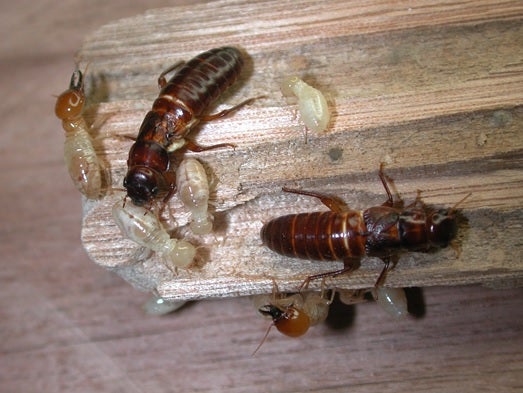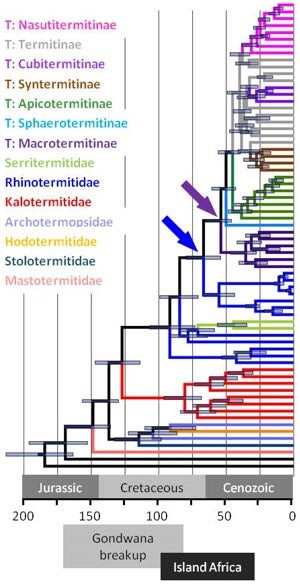Finding when and where termites originated
Theodore EVANS (Group Leader, Biological Sciences) () May 19, 201519 May 2015 NUS professors have discovered termites evolved from cockroaches 170 million years ago, probably in Africa or Asia.
Termites evolved from cockroaches by acquiring the ability to digest cellulose, the main compound in plant cell walls (and wood), and the most abundant organic molecule on earth. This helped them become one of the most abundant insect groups. Yet when and where they evolved is not well understood.
A team lead by Prof Theodore EVANS from the Department of Biological Sciences in NUS has used sequences of mitochondrial genomes from 48 termite species from all termite families and subfamilies from around the world and to determine the timing and locations of major steps in termite evolution.
The team determined the most robust phylogenetic (family) tree for termites to date, and that termites split from cockroaches about 170 million years ago in the mid-Jurassic period, when Pangea, the ancient single continent was in the process of breaking up. The results suggest termites are 35 million years older than the oldest known fossils (see Figure). They also determined that the most derived and largest family, the Termitidae, evolved about 54 mya, most likely on Africa when it was an island (but possibility in SE Asia). As most subfamilies in the Termitidae have pantropical distributions, these termites are likely to have dispersed over oceans in floating logs. It is likely most primitive species survived in isolation (eg in Australia for Mastotermes darwiniensis, the most primitive living species) far from the evolving and derived Termitidae in African and SE Asia.

The image shows the world’s most primitive living termite, Mastotermes darwiniensis, found only in tropical Australia, with the cockroach like parents (the dark brown queen and king) with their two types of children: the workers (smaller, white) and soldiers (orange head with long black mandibles). Very similar species are known from 100 million year old fossils [Image credit: Theo Evans].

Termite phylogeny showing evolution of major groups. The Rhinotermitidae (blue arrow) which contains most of the pest species, and Termitidae (the subfamily Macrotermitinae is the basal subfamily; purple arrow) when Africa was an island. T = Termitidae, the ‘higher termites’.
Reference
Bourguignon T, Lo N, Cameron SL, Šobotník J, Hayashi Y, Shigenobu S, Watanabe D, Roisin Y, Miura T, Evans TA. “The evolutionary history of termites as inferred from 60 mitochondrial genomes”. Molecular Biology and Evolution 32 (2015) 406.


